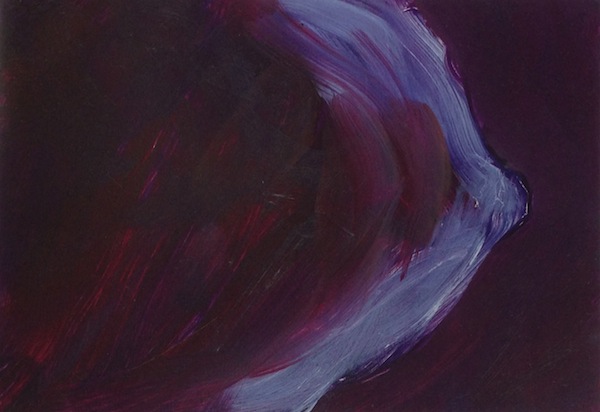Ever since I was a young woman, I’ve been hyper-aware of my breasts. Not because there’s anything special or unique about them, but because when I was in my twenties, I discovered a lump.
At the time, I was a radiation therapist at Maine Medical Center. I treated people with cancer, including women with breast cancer. I heard their stories, saw their mastectomy scars, witnessed their fear. Back then, in the 70s, women often had radical mastectomies. When I found the lump, I was terrified to imagine what my fate would be.
I went to my regular doctor, who poked and prodded my breast and declared there was no lump. I saw a second doctor, who felt it immediately and scheduled me for surgery.
Thank goodness, it wasn’t cancer. It was a benign tumor called an adenoma. It wouldn’t be my first. A few years later, another lump appeared in the opposite breast. More surgery. This time, it was a cyst.
Mammograms showed that I had lots of cysts in my breasts. Fibrocystic or lumpy breasts are common in women. They’re a hassle, though. You do regular breast self-exams and you never know what you’re feeling. It’s still important to do them. You get to know how your breast tissue feels and when/if something feels different.
I remember that morning in the shower when I was in my early 50s. I felt a tiny hard kernel on the outer edge of one breast, near my armpit. Panic. The surgeon did a biopsy in the office. It was a cyst.
Another time, a lump showed up on my mammogram. I had an ultrasound, which indicated it was a solid tumor, not a cyst. Instead of surgery, I had an ultrasound guided needle biopsy. It was an adenoma.
Every year, my doctor did a careful clinical exam and every year I had a mammogram. Each time, I held my breath. I did my breast self-exams and nothing seemed to change. Lumps. Always lumps.

Several years of “normal” passed. Until last year, when I got the call after my mammogram to return for additional views. No lumps. Instead, calcifications. Something I’d never considered. I had a stereotactic biopsy. The calcifications were DCIS — ductal carcinoma in situ or Stage 0 breast cancer. I had a lumpectomy. You can read about my experience in my blog post I was diagnosed with DCIS — Stage 0 breast cancer.
I’m telling you all this is because I’ve learned some things from my experience. One is that there’s a lot of misunderstanding and misinformation about breast cancer. Such as, that a breast lump means cancer. According to Dana-Farber Cancer Institute, 80 percent of breast lumps are benign. That’s just one breast cancer myth Dana-Farber is trying to dispel. They created this Top 10 Breast Cancer Myths infographic, which I thought was worth sharing with you.
Another thing I learned is that no two people with breast cancer are alike. In the case of DCIS, for instance, there is not even a consensus on the best treatment options. You can read about that in my blog post Stage 0 breast cancer (DCIS) Does it need to be treated?
Most important of all, I learned the value of support — from people who love you and from people you’ve never met, but who understand because they’ve been down a similar path. Have you been diagnosed with breast cancer? Is there something you’ve learned from your experience that you want to pass along?



Thanks, Diane. Just forwarded this to my daughter. She had breast cancer and a mastectomy.
And I’m sitting here with two copies of the SAGE test on my desk, afraid to take them. Thanks a lot!
You are welcome Robyn. I have an idea. It’s a beautiful sunny day where I am. How about you? We should go outside and soak it up instead of worrying!
Hello Diane,How should I know if my cysts is normal or should I just have a biopsy?I just had my 5th mamm & it came back normal but years ago my doctor found a lump so she ordered me to get my first mamm & ultrasound,She said if I want I could have the systs tested but she didnt think it was necessary.So a long story short Iv had this cysts for years & every mamm is always normal & Im sent off but a lump is a lump.Should I just get a second opinion & just have this (normal) cysts tested anyway?I even remember when I had my first mamm years ago the doc.that gave me the mamm. said your young with no family history so Ihat I have nothing to worry about.I remember seeing the pic of my cysts on a chart with my first mamm. & havent been able to get it out of my head for years so If you have any opinion on this I would lv that thanks 🙂